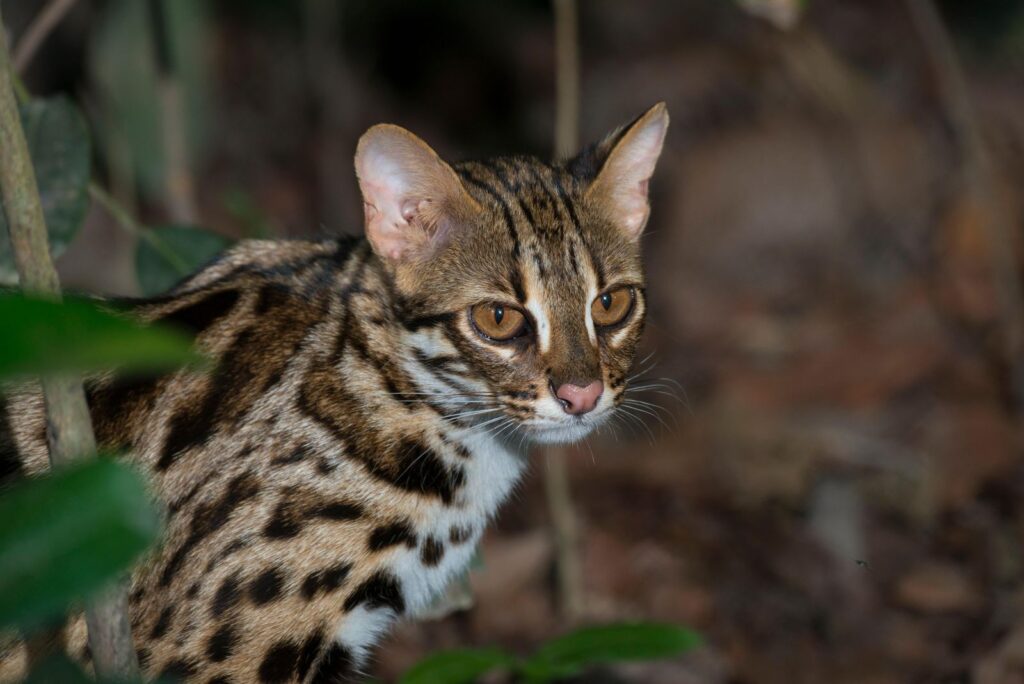
The allure of having a majestic big cat as a companion is undeniable. Images of playful tigers or lounging lions often capture our imaginations, fueling the question: can big cats be domesticated? While some wild cat species, like lions and tigers, exhibit traits that might seem domesticated, true domestication remains elusive for these magnificent creatures.
This article delves into the complex factors hindering the domestication of big cats, exploring their inherent behaviors, social structures, and the ethical considerations surrounding such an endeavor. We’ll examine why, despite anecdotal evidence of individual “tame” big cats, integrating them into human society as companion animals presents significant challenges and potential risks.
Big Cat Traits and Domestication
Domestication is a multifaceted process involving genetic and behavioral changes over generations, leading to traits that make animals suitable for living alongside humans. These changes often include: reduced fear of humans, altered social structures, tolerance for confinement, and a willingness to accept human care. While some big cats may display seemingly domesticated behaviors like purring or playing, these are not necessarily indicative of true domestication.
Domesticated animals typically exhibit a more docile temperament and a stronger bond with humans compared to their wild counterparts. They also tend to have physical characteristics that differ from their wild ancestors, such as smaller size, altered coat patterns, and floppy ears. These traits are the result of selective breeding over centuries, shaping the animal’s genetic makeup to better suit human companionship.
Challenges to Domestication
Several inherent challenges make domesticating big cats particularly difficult. Their large size, powerful predatory instincts, and complex social structures pose significant risks to human safety and well-being. Furthermore, their specialized dietary needs and habitat requirements present logistical hurdles for successful integration into human environments.
Big cats require vast territories to roam and hunt, which is incompatible with typical domestic settings. Their solitary or group living patterns can also lead to territorial disputes and aggression within confined spaces. Additionally, their powerful jaws and sharp claws pose a constant threat of injury, even to experienced handlers.
Instinctual Behaviors
One of the most significant obstacles to big cat domestication is their deeply ingrained instinctual behaviors. These instincts are essential for survival in the wild, driving them to hunt, defend territory, and raise offspring.
For example, a lion’s predatory drive compels it to stalk and kill prey, regardless of its environment or human presence. This instinct cannot be easily suppressed or trained away, posing a constant danger to humans and other animals. Similarly, a tiger’s territoriality can lead to aggression towards perceived threats, including humans who enter their space.
Territoriality and Social Structures
Big cats are highly territorial creatures, fiercely defending their claimed areas from rivals. This territorial behavior is often driven by the need to secure access to resources such as food, water, and mates. In captivity, this instinct can manifest as aggression towards other animals or humans who encroach upon their perceived territory.
Their complex social structures also present challenges for domestication. While some species like lions live in prides with a strict hierarchy, others like tigers are solitary hunters. Understanding and managing these intricate social dynamics within confined spaces is crucial to prevent conflict and ensure the well-being of both the animals and humans involved.
Ethical Concerns and Safety Risks
The ethical implications of attempting to domesticate big cats are significant. These magnificent creatures deserve to live in environments that meet their natural needs and allow them to express their inherent behaviors. Confining them to domestic settings can lead to psychological distress, behavioral problems, and a diminished quality of life.
Furthermore, the safety risks associated with keeping big cats as pets are undeniable. Even seemingly tame individuals can exhibit unpredictable behavior, posing a serious threat to human life and property. Accidents involving big cats often result in severe injuries or fatalities, highlighting the inherent dangers of attempting to domesticate these powerful animals.
Conclusion
While the allure of having a big cat as a companion is understandable, the reality is that can big cats be domesticated? The answer remains a resounding no. Their instinctual behaviors, complex social structures, and inherent safety risks make them unsuitable for life in human society.
Respecting these magnificent creatures requires recognizing their need for spacious habitats, specialized care, and the freedom to express their natural behaviors. Instead of seeking to domesticate them, we should focus on conservation efforts that protect their wild populations and ensure their survival for generations to come.
